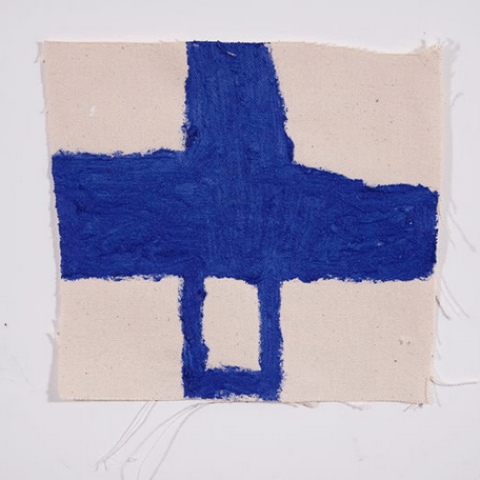WELCOME SCREEN
20 Felstead Street, Oslo House, West Wing, UNIT 1E,
London
E9 5LT
United Kingdom

Peter Shear has named this show 'Dragon Express' after his favourite takeaway in Bloomington, Indiana. Part of this homage to a 'pretty seedy looking Chinese take-out' is the limited-edition print which provides us with the menu; the artist's preferences highlighted. This simplicity and playfulness is also apparent in the painted works presented by the artist, however it is a deceptive simplicity.
Situating the viewer in Bloomington's Chinese takeaway belies the symbolic, abstract nature of Shear's works. It is when we start to explore the inference further and recognise the works' debt to Chinese painting and calligraphy that they take on a richer significance, posing questions for the viewer. These are paintings pared down to their bare essentials which hold, the artist hopes, a 'collective memory' for the viewer:
'What is important is that the works contain a problem—maybe one with no solution but still rewarding to spend time with. I like an image that quickly enters into viewers' awareness, then migrates to the subconscious for more serious mind control.â€
The small scale of the works is integral to their suggestive and symbolic nature; also allowing an intimacy with the viewer. As Shear states, 'a small canvas or bit of paper is an incredibly sensitive recording device', which can relate them to the 'spaces where our private lives play out.' They also 'make painting feel a little like writing', calling into question the nature of painting itself, as mark-making or symbolic gesture. The paintings begin to look like 'small signs'; painting become an 'advertisement for itself'. This notion of the marks and signs created speaking for themselves, but remaining obscure to allow the viewer to experience and attach meaning, is vital to Shear's work as he states, 'it's unimportant that I made it.' The legacy of Minimalism is present in this removal of intent, and in the creation of objects - rather than paintings - through the haphazard cutting of the canvas. But those uneven edges, together with the raw brushstrokes, constantly remind us of the creator's presence. In a similar way, the artist is very present on the restaurant menu with his circled choices, yet hopes to eliminate himself from the more enigmatic circles, lines, and simple shapes on his fragments of canvas by using 'as general and inclusive a vocabulary as possible'. This is a highly democratic approach, allowing us a shared experience - we have all made choices from a takeaway menu, Shear seems to say, just as we all consistently interpret signs and shapes as part of our 'collective memory'. Through this process, Shear is stepping down from the artist's pedestal and joining the viewer, no matter who they may be.
This egalitarian attitude to the position of the artist and art works in the public sphere brings us to the other playful reference in the title of the show; the critic Dave Hickey's 1993 work 'Invisible Dragon'. In this highly influential collection of essays, Hickey condemned the over-institutionalisation of art, leading to the dominance of celebrity and wealthy art-dealers within the art world, at the expense of the idea of beauty. It may be considered naïve in today's glossy, consumer-driven culture to yearn for such a return to aesthetic ideals, but this need to go back to images 'worn down to an essential' is shared by Shear. With self-effacing humility, Shear's tiny canvas shapes place beauty and meaning firmly back in the eye of the beholder.
Text - Anneka Hartley
